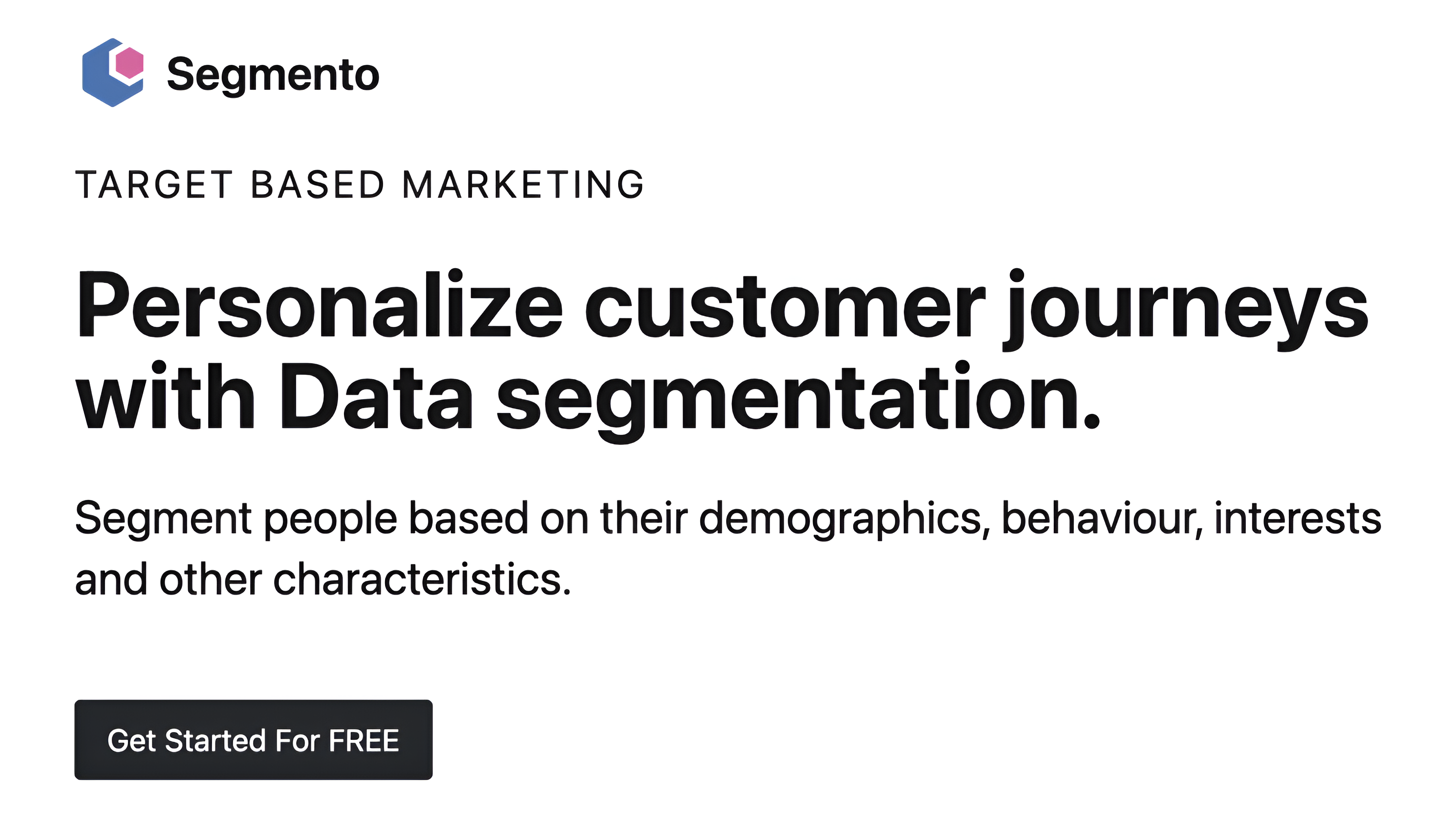Segmento
What is Segmento?
Segmento is a platform that securely stores your entire client database, removing the need for Excel sheets. It helps you to organize your data into specific segments based on user behavior and interests for better targeting. Additionally, it tracks every client interaction on your website/mobile app, from clicks to conversions, ensuring businesses can reach the right audience at the right time.

How Segmento Works -
Segmento works by capturing user data from multiple touchpoints, such as websites, apps, and other platforms, and organizing it into specific segments based on user behavior.
Data Collection: Segmento collects data on user actions, including clicks, purchases, sign-ups, and other behaviors. This data is gathered in real-time and stored.
User Segmentation: Based on predefined criteria (e.g., activity type, user status, demographics), Segmento automatically organizes users into different segments, such as anonymous or known users.
Automation Triggers: Once users are placed into specific segments, Segmento allows you to set up automated triggers for each group to drive more conversions.
Multi-Channel Campaigns: Segmento supports multi-channel communication, including SMS, WhatsApp, email, and push notifications. These channels are used to engage users and boost sales.
Real-Time Analytics: Segmento tracks the performance of campaigns and provides insights into user engagement, allowing you to optimize strategies and improve ROI.
Overall, Segmento enables personalized, data-driven marketing by organizing users based on their activity, automating campaigns, and enhancing customer retention.
Benefits of Segmenting your Userbase -
Millions of customers engaging with your website or app over time, tracking their activity can be difficult. However, with Segmento, this becomes entirely possible. Segmento enables you to filter users based on their activity. e.g - Once a user engages in any action, their information is automatically added to a specific segment, whether anonymous or known. For anonymous users, you can send push notifications to encourage for sign-ups, while for known users, you can leverage various marketing channels to enhance customer retention. This approach significantly boosts conversion rates and improves ROI.
1663832908583941.png)